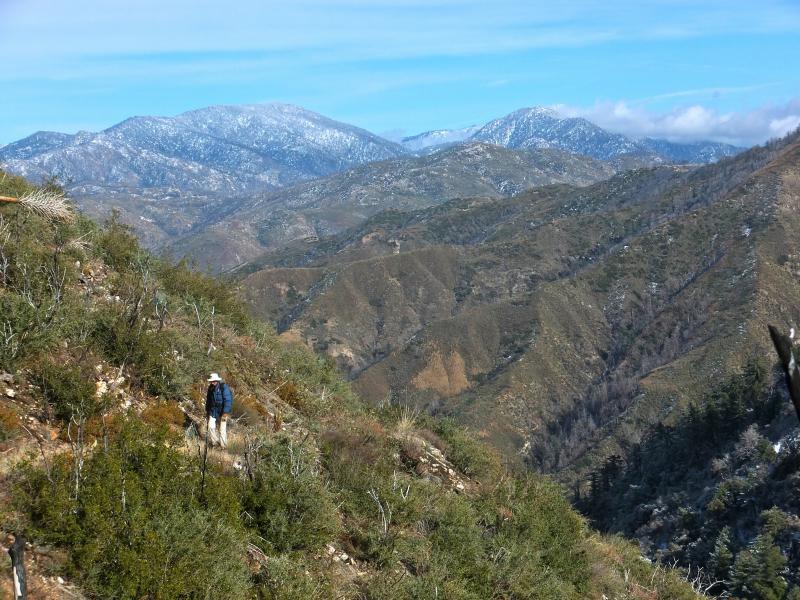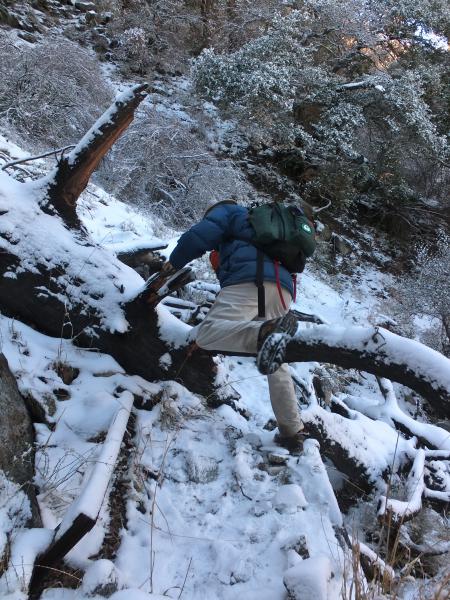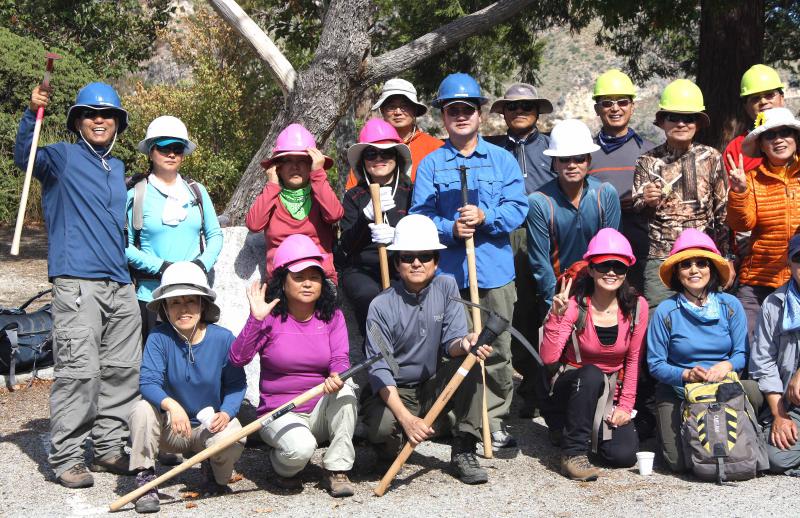
Named in the 1880s for its resemblance to a berry with its tip pointing up, Strawberry Peak has remained a popular climb ever since.
At 6,164 feet, it’s the highest summit in the front range of the San Gabriel Mountains, edging out nearby San Gabriel Peak by 3 feet if erosion and tectonic shifts haven’t changed things too much recently.
The peak offers hikers panoramic views of the front range and backcountry, with climbing routes of varying difficulty for both newcomers and experienced climbers. Or there’s the hike around the peak to Strawberry Meadow shadowed by the peak’s sheer north cliffs, a delightful patch of wilderness just an hour or two away from busy Angeles Crest Highway.
All of this has been officially off-limits to the public for three years since the 2009 Station Fire burned through. The U.S. Forest Service has gradually reopened most of the 160,000 acres in Angeles National Forest scorched in the fire, but a large area north of Mt. Wilson around Strawberry remains closed to recreation.

Damaged trails are one reason for the continued closure. Dirt and rock slides across the trail, washouts and downed trees make the trails difficult in some places or even risky. Not to mention the thick stands of poodle-dog bush that tempt the unwary with purple blossoms, but can leave a stinging rash if touched. Poodle-dog, thriving in areas denuded by the Station Fire, often grows taller than a man’s head and can lean menacingly across the trail as hikers and bicyclists try to squeeze by.
With the Forest Service short of funds for trail maintenance and repair, volunteers have turned out to help restore the Strawberry Peak Trail and the adjoining Colby Canyon Trail. The two trails make an arc of several miles from Red Box Junction to the Colby Canyon trailhead about four miles west along Angeles Crest Highway. The Sierra Club’s Trail Crew has joined in the trail restoration, along with volunteers from JPL and the Concerned Off-Road Bicyclists Association (CORBA).
A contractor specializing in trail work did an assessment of the Colby/Strawberry trails in the fall of 2011, listing every point needing work and its GPS coordinates. The needed repairs ranged from small slides and dead trees across the trail to big rock and dirt slides, washouts, Sutter retaining walls damaged by fire, drains and spillways to be restored to handle flow from heavy storms, and rerouting sections of trail.
Many of the jobs can be done by volunteers who have had training and considerable experience during years of trail work. Others may be more difficult, requiring machines to move debris or haul in heavy materials. Those will await the contractor’s crews, and that will take money. Grants may help get started.

The Sierra Club Trail Crew, organized by the Angeles Chapter Forest Committee, has worked on a variety of trails since the summer of 2010. But leaders decided to concentrate now on the Strawberry Peak Trail. With grant funds, the Forest Committee bought a small tool shed and enough trail work tools for 15 or 20 Sierra Club volunteers and placed them at Red Box at one end of the trail.
The hope is that with volunteer groups sharing the work, and the contractor doing the more difficult tasks, the Strawberry/Colby Canyon loop can be improved and reopened to the public before long.
Photos from top: Members of the Sierra Club’s San Gabriels Trail Crew scouted an extension of the Strawberry Peak Trail in December to check on its condition and found some obstacles, above, along with a layer of snow. (Photos by Bob Cates) Members of a Korean-American hiking club pitch in to work on repairing the trail severely damaged by the 2009 Service Fire. (Photo by Don Bremner)
Related content:
Bryan Gordon
January 5, 2013, 11:27 am
Will Taylor
January 8, 2013, 2:36 pm
Daniel Rosenthal
June 16, 2013, 10:58 pm
Marvin Espinoza
January 5, 2013, 2:01 am